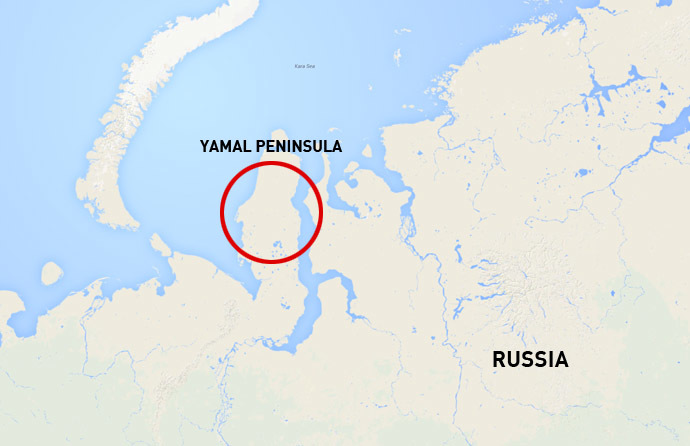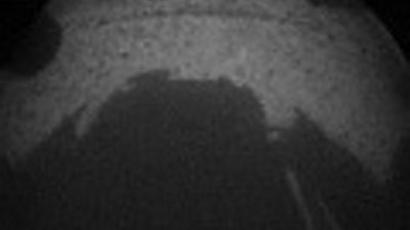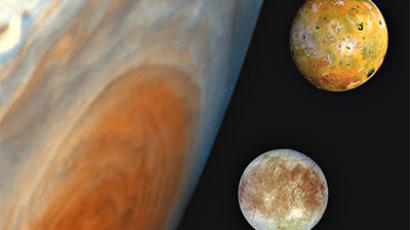Giant 80m Siberian crater at 'world’s end' (VIDEO)

A mysterious giant crater has been discovered in a remote part of Siberia, dubbed by locals ‘the end of the world’, and is now puzzling scientists. An urgent expedition was sent to the far-northern peninsula to try and solve the mystery.
The team arrives on Wednesday to survey the seemingly bottomless pit, located in one of Russia’s northernmost points, at a latitude closer to that of Greenland than Canada.
The hole is about 80 meters wide and apparently had some extreme thermal event contributing to its formation, according to scarce detail gleaned from video footage, Rossiyskaya Gazeta reported. It wasn’t until that footage started to make the rounds that the media and the scientific community woke up to the possibility of surveying its origins.
The crater is believed to have been formed two years ago. No one knows how.
The seriousness of the find is evidenced by Russia’s Emergencies Ministry being present among the expedition. The Russian Academy of Sciences is also on board, planning to take samples of the soil, air and water from the area, which is big enough to fit several MI-8 helicopters.
Yamal, the peninsula where the spooky hole is located, is far up in the northern-Russian steppes. The precise location of the crater is some 30km from the gas field of Bovanenkovo. The whole area is within Russia’s key strategic oil and gas region – the Yamalo-Nenets Autonomous Okrug.
The 700km area is a huge stretch of ancient permafrost otherwise known for its variety of animal species and is renowned as an archaeological goldmine where wooly mammoth skeletons have been discovered.
While some of the more absurd theories about the hole’s origins have been readily dismissed – chief among them that it was caused by a UFO – others see a potential relationship with global warming, believing that salt and gas were mixed underground, causing a subterranean explosion.
The one thing everyone agrees on is that the soil found around the crater was thrown out of it.
When asked if it’s possible that the hole was caused by a meteorite, a spokesman for the Yamal branch of the Emergencies Ministry said “we can definitely say that it’s not a meteorite. No details yet.”

The theory about the ignition of underground gas posits that ice and sand helped gas accumulate over time. When this mixed with salt, the explosion took place. The reason for this theory is that sometime around the last Ice Age (about 10,000 years ago) the area was still all sea, according to the Sub-Arctic Scientific Research Center’s Anna Kurchatova.
When global warming happens and permafrost begins to melt, large deposits of natural gas are released, which may have led to an effect similar to popping open a bottle.
Much will remain hidden about the mysterious crater until the researchers come back with more answers.
Something that takes away from the mystery slightly is that this might after all be a naturally occurring, quite boring, phenomenon.
“Occurrences like this are nothing new in Yamal,”a spokesman for the governor’s office told Interfax-Ural.“This happened last year, as well as two years ago… earth and ice behave unpredictably An underwater river might have moved the soil,” he added, explaining how these processes repeat over time as surfaces melt and freeze over again. “So, there’s no emergency to speak of here.”
The spokesman flat-out rejected the meteor theory, but said that a further investigation of the area should yield further information.














